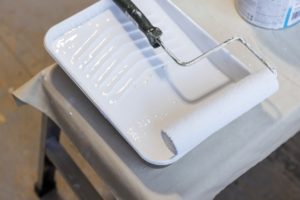
How many coats of primer do you need for success?
When you’re tackling a painting project, one of the most common questions people ask is: “How many coats of primer do I need?” Primer plays a critical role in ensuring your paint adheres properly, looks smooth, and lasts for years, but knowing how much to apply depends on the surface and the project itself. Whether you’re painting over dark colors, raw wood, or new drywall, understanding the right number of coats of primer can make all the difference in your results.
Here’s a guide to help you determine how many coats of primer your project with Columbia Paint Company really needs.
What Primer Does (and Why You Shouldn’t Skip It)
Primer isn’t just an optional first step—it’s the foundation for your entire paint job. It helps paint stick to the surface, blocks stains or discoloration, and creates an even base for the topcoat. Without it, your paint might peel, appear uneven, or require multiple extra coats to get the same finish.
So before you open that can of paint, it’s important to make sure your primer is doing its job and that you’ve applied enough of it.
Painting Bare Drywall: Two Coats of Primer
New drywall is porous and absorbs paint unevenly, which can lead to dull or blotchy spots if you skip primer or don’t use enough. For the best results, apply two coats of primer to seal the surface and ensure a uniform finish.
If you’re using a high-quality drywall primer or a paint-and-primer combo product, one coat may suffice—but two is often better for consistent coverage, especially in high-traffic rooms like hallways or living areas.
Painting Over Dark or Bold Colors: Two Coats of Primer
If you’re trying to cover a dark wall with a lighter paint color, a single coat of primer usually won’t cut it. You’ll likely need two coats of primer to fully block the old color and prevent it from bleeding through.
For even better results, use a tinted primer that’s close to your new color—it will make your final paint job look brighter and require fewer coats of paint.
Painting Bare Wood: One to Two Coats of Primer
Bare wood can be tricky to paint because it absorbs liquids at different rates, depending on the grain and type of wood. Applying one to two coats of primer helps seal the surface and prevents tannins (natural oils in the wood) from staining your paint.
If you’re painting a soft wood like pine, one coat might be enough. For hardwoods or heavily grained woods like oak or mahogany, go with two coats to ensure a smooth and even surface.
Painting Over Stained or Glossy Surfaces: One Coat of Primer
When painting over glossy finishes, stains, or previously painted surfaces, one good coat of primer is often sufficient. Just make sure to clean and lightly sand the surface first to help the primer adhere properly.
If the old paint color is significantly darker than your new one, or if you’re dealing with stubborn stains or smoke damage, apply a second coat for extra coverage.
Painting Metal or Plastic: One Coat of Specialized Primer
For metal or plastic surfaces, always use a primer formulated specifically for that material. One coat is usually enough, as these primers are designed for maximum adhesion and protection. However, if the surface is rusted or especially slick, you may need a second coat to achieve a uniform base.
How to Tell If You Need Another Coat
After your first coat of primer dries, inspect the surface carefully:
- Does the old color still show through?
- Does the primer look patchy or uneven?
- Is the surface still porous or chalky?
If you answered “yes” to any of these questions, apply another coat. It’s always better to invest time in an extra coat of primer than to deal with uneven paint later.
The Bottom Line: When in Doubt, Two Coats Are Best
In most cases, two coats of primer will give you the most reliable and professional-looking finish. While one coat may work for touch-ups or similar color transitions, two ensures better adhesion, coverage, and long-term durability.
For best results, always follow the manufacturer’s recommendations on drying time and surface prep, and make sure your primer is fully dry before painting.
Get the Perfect Start to Your Paint Project
Knowing how many coats of primer to apply can make or break your painting results. Whether you’re repainting a single room or your entire home, proper priming ensures smooth, vibrant, and long-lasting color.
If you’re unsure which primer to use—or how much your specific project requires—visit your local paint experts at Columbia Paint Company. We can recommend the right products for your surfaces, color goals, and conditions, helping you start every paint job the right way.
NEW LOCATIONS! VISIT THE US AND EXPLORE!
We’ve moved from the Dobbin Road location to our new, roomy location just down the road:
Columbia Paint and Decorating, a Benjamin Moore Dealer
6822 Oak Hall Lane, Suite C2, Columbia, MD 21045
443-319-4001
Expect the same one-stop shopping for all your decorating needs. We are a full-service Benjamin Moore dealer offering the best quality decorating products at the best prices. We have an ample supply of paint and paint supplies, wallcoverings, custom window treatments, fabrics, and now NEW flooring selections from Kaleen Rugs and Luxury Vinyl Tile samples.
And, of course, the same excellent customer service, knowledge, and customer satisfaction that you’ve come to expect.
ANNOUNCING OUR SECOND LOCATION:
Clarksville Paint & Decorating, a Benjamin Moore Dealer
12447 Clarksville Pike, Suite 1A, Clarksville, MD


